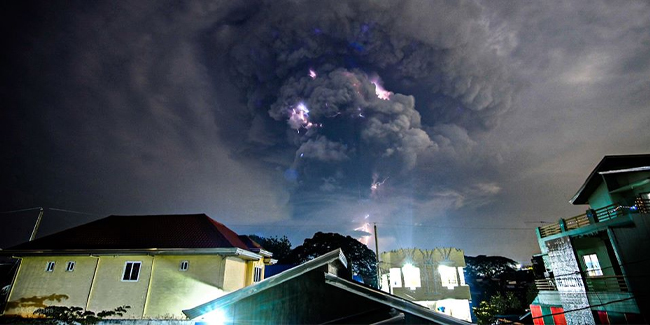As of 8:00 a.m. of January 13, 2020, the Philippine Institute of Volcanology and Seismology (PHIVOLCS) issued a Taal Volcano Bulletin.

According to DOST-PHIVOLCS, the Taal Volcano entered a period of intense unrest starting with phreatic or steam-driven activity in several points inside its main crater at 1:00 p.m. of January 12, which was progressed into magmatic eruption at 02:49 a.m. to 04:28 a.m. of January 13.
DOST-PHIVOLCS stated that the magmatic eruption was characterized by “weak lava fountaining accompanied by thunder and flashes of lightning.” Booming sounds were heard at 2:00 p.m. at Talisay, Batangas.
Based on the reports from the Philippine Seismic Network, they have recorded a total of 75 volcanic earthquakes in Taal region as of 5:00 a.m. of January 13. Thirty-two (32) of these volcanic earthquakes were felt with intensities ranging from Intensity II to Intensity V in these places: Tagaytay City, Cabuyao, Laguna, Talisay, Alitagtag, Lemery and Bauan, Batangas.
The alert Level 4 still continued in effect over Taal Volcano, which means, according to DOST-PHIVOLCS, the hazardous explosive eruption will happen within hours to days. The Philippine Institute of Volcanology and Seismology strongly restated the total evacuation of Taal volcano island as well as areas at high risk to pyroclastic density currents and volcanic tsunami within a 14-km radius from its main crater.
The DOST-PHIVOLCS will continually monitor the eruption.
READ ALSO | Netizens Think That This Volcano Is The ‘Real’ Taal Volcano
